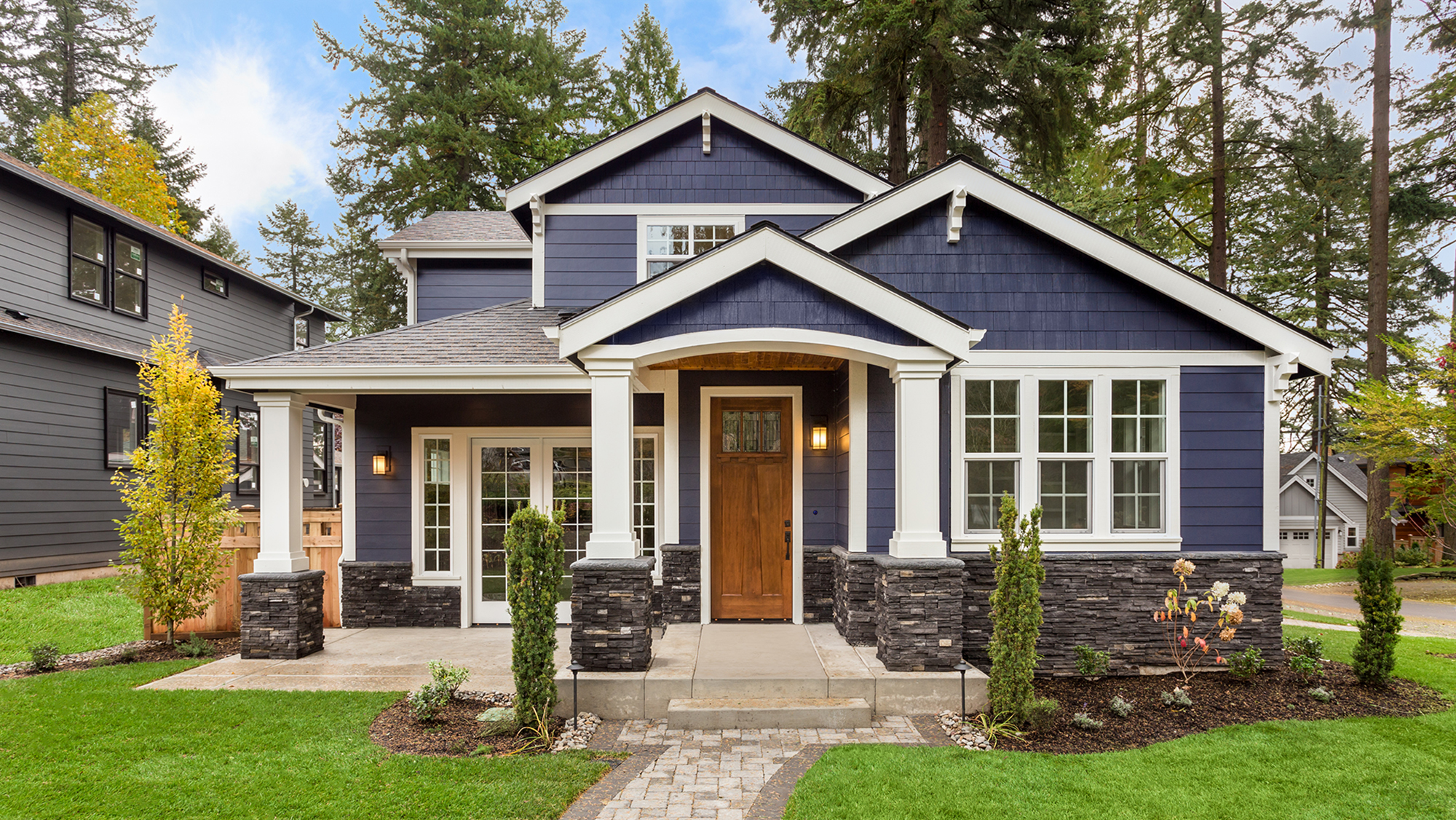How to paint a house exterior
Discover how to paint a house exterior for a professional, authentic finish with long-lasting results


There is much more to knowing how to paint a house exterior successfully than simply choosing a paint color and brushing it on.
Like painting a room, tackling the outside of your home needs the right choice of paint. To achieve a good result, paint must not only look great but be compatible with what it is painted over, durable, maintainable, historically suitable, and well applied. It should also be environmentally sound.
Paint functions to protect outside components from degradation caused by the weather as well as enhancing the appearance of a building. It's one of the most important features of house design, and choosing the right color and finish should be central to your paint ideas.
Note that it is preferable not to paint original walls that have been previously unpainted, as is frequently the case with brick.
How to paint a house exterior with the right finish
Any new paint must be compatible with existing coatings. For example, the use of a water-based latex paint over existing alkyd or oil-based paint may lead to the old paint detaching.
An important aspect of knowing how to paint a house exterior, is choosing paint that is also compatible with the building components to which it is applied and your house style.
The walls of many older houses are of traditional construction. Therefore, it is important that the paint is moisture-open, or ‘breathable’, to allow the evaporation of moisture.
Design expertise in your inbox – from inspiring decorating ideas and beautiful celebrity homes to practical gardening advice and shopping round-ups.
If impermeable plastic-based coatings are used this can produce blistering, damp and cause deterioration.
Should I use gloss paint?
Gloss paint provides a hard-wearing finish that helps resist marking and cleans well, but highlights surface imperfections and can require more coats than less shiny paints.
It is best reserved for components that are regularly touched and highly visible, such as front doors.
Paint with a lower sheen, by contrast, is less durable and harder to clean but easier to touch up.
Painting outside of house – colors

When deciding how to paint a house exterior, the choice of color is best guided by the house, its surroundings, location and age.
Bear in mind that controls exist on colors in some protected or designated areas.
Light-colored window frames will normally sit comfortably with buff stonework, whereas dark colors can look good with red brickwork.
Consider variation to highlight different features, such as timber framing, or even different storeys. Lighter colors can work well on upper storeys with darker colors lower down.
Bear in mind that dark colors will absorb more solar radiation and hasten the ageing of paint.
How to prep a house for painting
Test the paint before you commit to it. Brush sample colors onto your building or small MDF boards, and view them at different times of the day and in varying weathers to check that the hue is the one you desire.
Thorough preparation is essential before painting. Surfaces should be clean, sound and dry. Scrape and sand loose paint prior to redecoration.
The use of ‘wet and dry’ sandpaper and a sanding block can assist you with achieving a smooth finish on joinery.
If you need to remove paint that might date from before the 1960s, it could be lead-based so use a method that does not create dust or fumes.
How to apply the paint
- When painting a house exterior, you should start from the top and work down.
- Tackle a wall before joinery, unless the exterior comprises mostly the latter.
- Retain a wet edge as you paint to avoid lap marks.
- Sanding between coats on woodwork can provide a superior finish.
- Postpone painting if rain is forecast.

Best paint for a house exterior
The following paints are breathable and among those used on traditional solid walls:
- Limewash, comprising lime and water, often with natural earth pigments. It has long been used for painting lime render and walls of limestone or earthen materials. It is easy to make or can be bought ready-made.
- Mineral paint consists of silicate mixed with inorganic fillers and natural pigments. It is well suited to decorating new lime render.
Oil paint was used on certain renders, including those of natural cement. Alkyd resin paint can be used to replicate an authentic historic finish but is best avoided where walls are damp.
When choosing paints for timber, alkyd paint systems are those most generally in use on external joinery.
Alternatives often used on old buildings include:
- Alkyd/acrylic resin blends, sometimes called microporous paint.
- Linseed oil paint, which can be refreshed between major redecorations with boiled linseed oil.
- Linseed oil emulsion, also available from linseed oil paint suppliers, can be used on timber framing (and plinths below) and weatherboarding. It is particularly useful for overcoating blackened timbers without stripping existing coatings back.
Can I paint the exterior of my house myself?
If you are in good physical shape and confident at painting, then you can paint the exterior of your house yourself.
However, it is a long, strenuous job, so you may decide that you would rather hire someone to take on the work for you.
If you do decide to paint your house exterior yourself, then safety is paramount. As well as ensuring you wear protective gear to prevent the inhalation of dust and fumes, and irritation from splashed paint, make sure you have the right equipment for the job.
A good ladder is essential – but never overstretch. Many professionals will install scaffolding for the job, and it is definitely worth paying for if you also have other exterior improvements to make.
What order do you paint the exterior of a house?
Always work from the top down, and not in the glare of the sun:
- Start with the soffits, fascia and trim.
- Next, paint the walls of the house, top down.
- Then, paint the windows if they need refreshing.
- Finish with the front door.
Douglas Kent is technical and research director at the Society for the Protection of Ancient Buildings (SPAB).

Having graduated with a first class degree in English Literature, Holly started her career as a features writer and sub-editor at Period Living magazine, Homes & Gardens' sister title. Working on Period Living brought with it insight into the complexities of owning and caring for period homes, from interior decorating through to choosing the right windows and the challenges of extending. This has led to a passion for traditional interiors, particularly the country-look. Writing for the Homes & Gardens website as a content editor, alongside regular features for Period Living and Country Homes & Interiors magazines, has enabled her to broaden her writing to incorporate her interests in gardening, wildlife and nature.